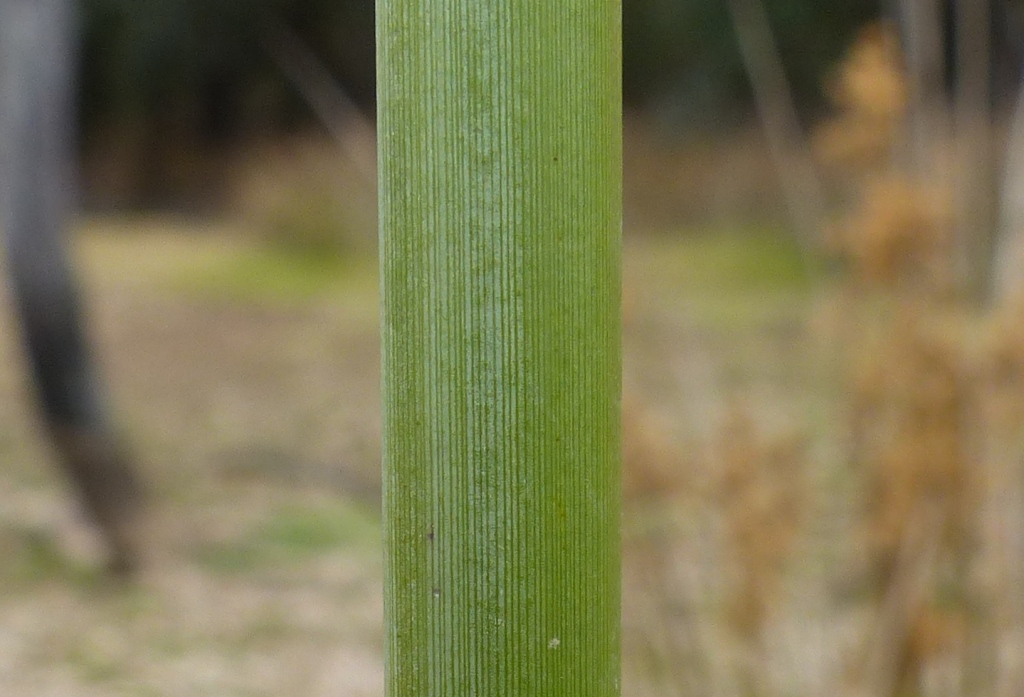Juncus flavidus
L.A.S.JohnsonTufted perennial with horizontal or ascending rhizomes. Cataphylls usually loose, reddish-brown or dark brown towards the base (occasionally only pale brown), to c. 30 cm long. Culms erect, dull yellow-green to dull blue-green, occasionally glaucous when young, 35–120 cm high and 0.9–5.5 mm diam.; striations 50–130, not or scarcely raised, very crowded and often difficult to count; pith interrupted throughout or in part, air spaces variable in size; stomates sunken in pits. Inflorescence variable, flowers either clustered (but clusters rarely sub-globular in shape), or scattered; primary bract continuous with culm, to c. 30 cm long; prophylls present. Tepals stramineous, 2.7–3.5 mm long; stamens 3–6, anthers 0.7–1.2 mm long. Capsules stramineous with a golden-brown apex, shorter than, equal to, or very rarely slightly exceeding the tepals, 2.0–3.2 mm long. Flowers mostly Sep.–Dec., seeds shed mostly Dec.–Mar.
LoM, MuM, Wim, GleP, VVP, VRiv, MSB, RobP, MuF, GipP, OtP, Gold, CVU, GGr, DunT, NIS, EGL, EGU, HSF, HNF, OtR, Strz, MonT, VAlp. Also WA, SA, Qld, NSW, ACT. Introduced in New Zealand. Occurring in wet depressions and along drainage lines from almost sea-level to the subalps.
Distinctive characters of Juncus flavidus are the dull culms, some or all of which are almost smooth when viewed just above the apex of the longest cataphyll, the comparatively long acuminate tepals (the tips of which are easily broken), the large anthers and the cataphyll bases, which are typically distinctively reddish-brown. Juncus flavidus is most likely confused with J. subsecundus and J. australis. Hybrids with J. pallidus, J. australis and J. subsecundus are known.
Albrecht, D.E. (1994). Juncus. In: Walsh, N.G.; Entwisle, T.J., Flora of Victoria Vol. 2, Ferns and Allied Plants, Conifers and Monocotyledons, pp. 197–233. Inkata Press, Melbourne.
 Spinning
Spinning



